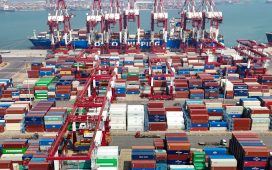Dulles Krishnan (DK): As the US adjusts its tariffs to match those imposed by trading partners, exporters will need to navigate an increasingly complex web of duties, documentation, and regulatory requirements. These changes could directly impact pricing models, disrupt cash flows, and strain existing supply chains. For medium and small businesses with limited compliance teams, understanding and adapting to these shifts will be difficult.
One of the most immediate challenges is dealing with changes in tariff rates. With unpredictable rates, exporters risk being caught off guard, leading to unexpected cost escalations. Exporters will need to renegotiate contracts, revisit pricing strategies, and recalculate landed costs. In addition, the US may enforce stricter Country of Origin requirements, particularly for goods with multi-jurisdictional supply chains; non-compliance could lead to shipment delays, customs penalties, or outright rejection of consignments. As a result, what was once a periodic task will now become a continuous process of monitoring, verification, and adjustment.
Moreover, exporters will also have to navigate dual taxation and customs regulations across various US states, adding another layer of complexity. While businesses can monitor developing trends and make educated bets on how the compliance landscape might evolve, the reality is: it is unpredictable.
What makes the current scenario even more challenging is the Trump administration’s introduction of a 90-day pause. This short window to adapt increases compliance pressure on businesses, especially MSMEs, which may not have the agility or infrastructure to pivot quickly. Additionally, sectors like processed food, textiles, jewellery, and footwear—now facing new or increased US tariffs—will need to quickly adjust supply chain documentation, update Harmonized System (HS) codes, and conduct origin audits more frequently.
To prepare, proactive measures like conducting regular compliance audits and seeking expert counsel on international trade laws will be critical; also, investing in tax automation tools that track real-time tariff changes, simulate duty impacts, and flag risky consignments will be crucial. Building strong relationships with customs brokers and leveraging technology-driven platforms that provide regularly updated regulatory guidance can help businesses adapt swiftly.
ET: Given the complexity of tariff regulations, how can technology and automation help exporters?
DK:
While the current uncertainty over tariffs may be unsettling, the truth is that businesses deal with changing tariffs all the time. In 2023, there were 337 international rate updates and 6,779 international taxability updates. The key to handling all these changes and streamlining international trade compliance is customs duty automation.
For MSMEs, especially those engaged in cross-border trade, automated tax compliance solutions offer a crucial competitive edge. These solutions enable exporters to calculate customs duties, import taxes, and tariff code classifications in real time—helping them avoid costly errors, shipment delays, or rejections due to inaccurate paperwork.
Automation tools that sync with international databases and monitor trade policy changes in real time can help MSMEs simulate the impact of new tariffs instantly, offering clarity on margins, landed costs, and profitability before the goods even leave Indian ports. For small businesses with limited compliance teams, this reduces the risk of human error and allows decision-makers to focus on revenue-generating functions rather than manually tracking trade laws. Moreover, with potential new US regulations on Country-of-Origin rules and retaliatory duties, exporters must maintain accurate audit trails and origin documentation. Automation can streamline this process, reducing administrative burden while improving accuracy.
ET: What strategies should Indian MSMEs adopt to mitigate the impact of increased tariffs?
DK: One of the common issues for many Indian businesses, especially MSMEs, in international trade is treating taxes and tariffs as an afterthought, rather than an integral part of their pricing and planning strategy. Companies often focus heavily on closing the sale, shipping the goods, and receiving payment, only to realise later that they’ve overlooked critical customs, duties, and regulatory requirements in the destination country.
Indian MSMEs must adopt a proactive, not reactive, approach to their trade strategies. By staying ahead of regulatory changes, MSMEs can reduce disruptions, decrease penalties, and make informed decisions about pricing, supply chains and market entry. Moreover, MSMEs should focus on diversifying their export markets to reduce dependency on the US or any single trade partner. Exploring emerging and underdeveloped markets like South America, Southeast Asia, and the Middle East can open up new opportunities and offset potential losses from tariff-hit regions.
ET: What is the opportunity for India if the US tariff pause continues beyond 90 days and the 145% duty on China remains in effect?
DK: If the US decides to extend the 90-day pause for India while maintaining its 145% tariff on select Chinese goods, India stands to gain significant strategic and commercial ground. In such a scenario, Indian manufacturers and exporters, particularly in electronics, pharma intermediates, apparel, and machinery, can position themselves as viable alternatives to Chinese suppliers in the US market.
Several American buyers are already exploring a “China+1” sourcing model to de-risk their supply chains, and an extended pause gives India the headroom to make its pitch stronger. This could translate into new sourcing contracts, higher order volumes, and deeper B2B engagement, particularly for Indian MSMEs that can deliver at scale with speed. However, to fully capitalise on this, Indian businesses must ramp up production readiness, meet US compliance standards, and be agile when navigating certifications and documentation requirements. The opportunity isn’t just about trade diversion; it’s about stepping up as a trusted, long-term supply partner in the global realignment of trade flows.










